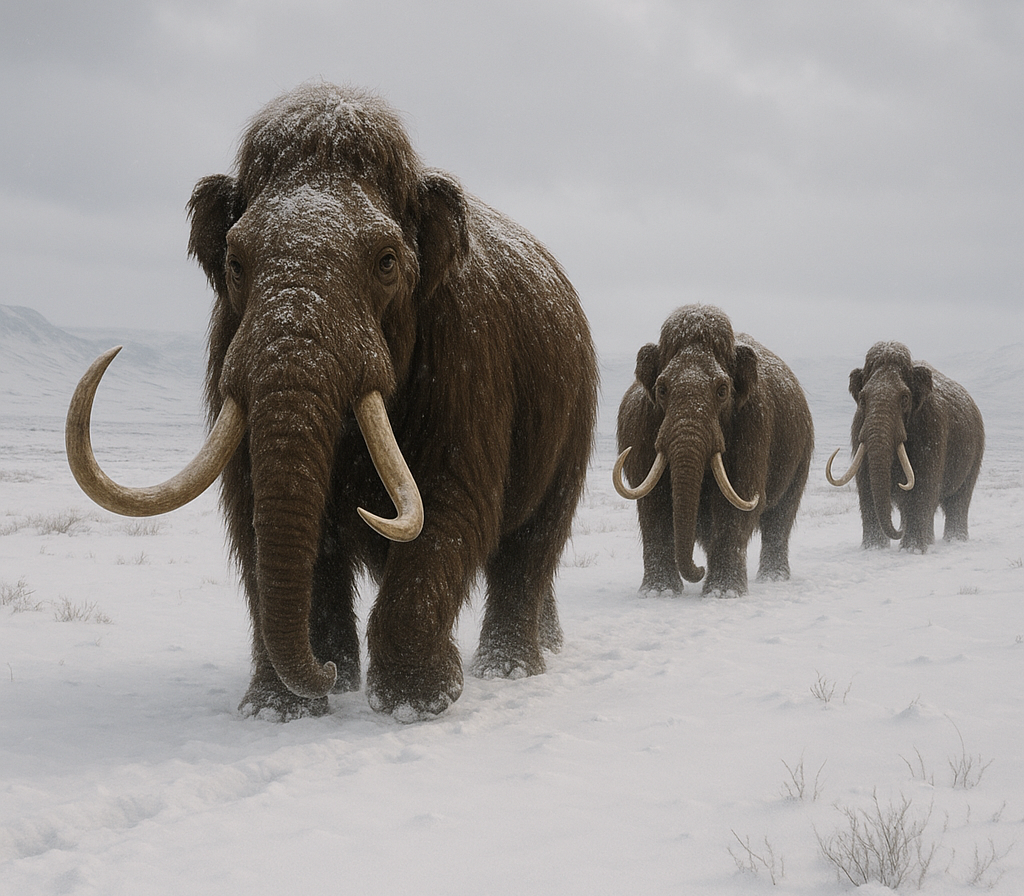
Long before modern humans built cities or carved out farms, woolly mammoths roamed the frozen plains with thick coats and steady steps. While their bones, tusks, and frozen bodies have long provided clues to their lives and struggles, the focus has primarily been on ancient DNA. RNA, a molecule that reveals which genes were active in the final moments of life, was previously considered too fragile to survive more than a few hours. However, this belief has now been challenged by a groundbreaking study.
A recent study has revealed that fragile RNA molecules can remain intact far longer than previously expected. Scientists examining woolly mammoth remains preserved in Siberian permafrost have successfully recovered RNA from muscle and skin that is up to 52,000 years old. Although these molecules are damaged and short, they still hold a clear signal, indicating which genes were active, how muscle fibers functioned, and even hinting at the stresses the animals faced before death. This discovery adds a new dimension to our understanding of extinct species by capturing the last flickers of gene activity within their cells.
Frozen Tissues and a Surprising Discovery
The research team analyzed soft tissues from ten mammoths discovered across northeastern Siberia. These remains were found in areas where thawing ground exposes ancient carcasses, sometimes with muscle, skin, or hair still attached. From each sample, the scientists extracted both ancient DNA and RNA. Despite the RNA being present in minuscule amounts, three specimens stood out for their strong and reliable signals.
Among these was Yuka, a juvenile mammoth found on the Oyogos Yar coast, dated to roughly 39,000 years ago. Another specimen, known as the Oymyakon calf, lived about 44,000 years ago. The oldest, a female nicknamed “Chris Waddle,” dates to nearly 52,000 years based on mitochondrial DNA. RNA fragments from all three animals exhibited the expected signs of deep age; the older the sample, the shorter and more fragmented the RNA.
Before delving into what these RNA pieces could reveal, the team needed to confirm their authenticity as ancient. Using mapping tools that compare RNA sequences against modern elephant genomes, scientists tested multiple alignment methods. Bowtie2 ultimately provided the most trustworthy results for these fragile fragments. They also compared where RNA and DNA mapped across the genome. Fresh RNA typically maps to exons, the parts of genes used to create proteins. The mammoth RNA behaved similarly, while DNA did not, a key indicator that the data came from genuine ancient transcripts rather than contamination.
Challenging Assumptions About Mammoth Biology
One unexpected finding emerged from the genetic signals used to determine sex. Yuka had long been thought to be female based on outward anatomy and early descriptions. However, the new RNA and DNA data tell a different story. The samples contained Y chromosome sequences, including those from USP9Y and SRY, critical markers of male development.
After reviewing earlier datasets from Yuka’s tissues, researchers confirmed the discrepancy. The animal appeared male at the genetic level but female externally. Such discrepancies can occur in rare developmental conditions where sex genes do not fully guide physical development, although the study did not find direct evidence for a specific cause.
A View Into Muscle Built for Endurance
With confidence that the RNA reflected genuine gene activity, the team explored what it could reveal about mammoth muscle. Yuka’s samples contained over 300 protein-coding messages and more than 900 noncoding RNAs. Many of the strongest signals came from genes known to shape the structure and rhythm of muscle fibers.
Proteins such as titin, nebulin, obscurin, and filamin-C, all central to muscle strength and movement, were among the most abundant. Core contractile proteins like actin alpha and the slow-twitch myosin heavy chains MYH6 and MYH7 stood out as well. These molecules are strongly linked to endurance, suggesting that the mammoth’s muscles were built for long, steady travel across cold steppes rather than quick, forceful bursts of energy.
The noncoding RNAs carried their own clues. MicroRNAs like Mir-1 and Mir-133, which guide muscle development in living animals, were present at high levels. Their presence supports the idea that these were real, functioning molecules from the mammoth itself, not pieces introduced by contamination. When researchers compared the expression patterns to gene maps from modern humans and elephants, Yuka’s profile aligned closely with skeletal muscle samples, reinforcing the data’s accuracy.
“This ancient RNA also held traces of rare genetic variants that match those found in high-quality mammoth genomes. In some cases, the scientists even detected sequences that point toward previously unknown microRNA genes.”
What Old RNA Can Reveal in the Future
RNA is known to decay rapidly after death, but this study shows that under cold, dry conditions, it can persist far longer than expected. Stockholm University’s Emilio Mármol, lead author of the study, explained that RNA reveals which genes were turned on during the final moments of life, something DNA cannot show. These signals can uncover stress responses, tissue activity, and possible injuries.
In Yuka’s case, the team observed signs of cellular stress that align with earlier suggestions that cave lions may have attacked the young mammoth before death. Researchers involved in the work, including Love Dalén and Marc Friedländer, emphasize that RNA offers a real-time snapshot of past biology. The findings even suggest the possibility of retrieving ancient RNA viruses, such as influenza or coronaviruses, frozen within Ice Age remains. Such discoveries could deepen our understanding of how diseases evolved and how ancient species responded to infection or injury.
Practical Implications of the Research
The survival of ancient RNA across tens of thousands of years provides researchers with a new tool to study extinct life. This work demonstrates that scientists can now move beyond DNA and proteins to examine which genes were active in the hours before an animal died. This ability could transform how scientists reconstruct the biology, behavior, and health of extinct species. It may also enhance the search for ancient pathogens, opening the door to understanding the evolution of viral diseases that once spread through prehistoric ecosystems.
As methods advance, combining ancient RNA with DNA, proteins, and other biomolecules could offer future researchers a more comprehensive view of extinct animals and the environments they navigated. The research findings are available online in the journal Cell.







